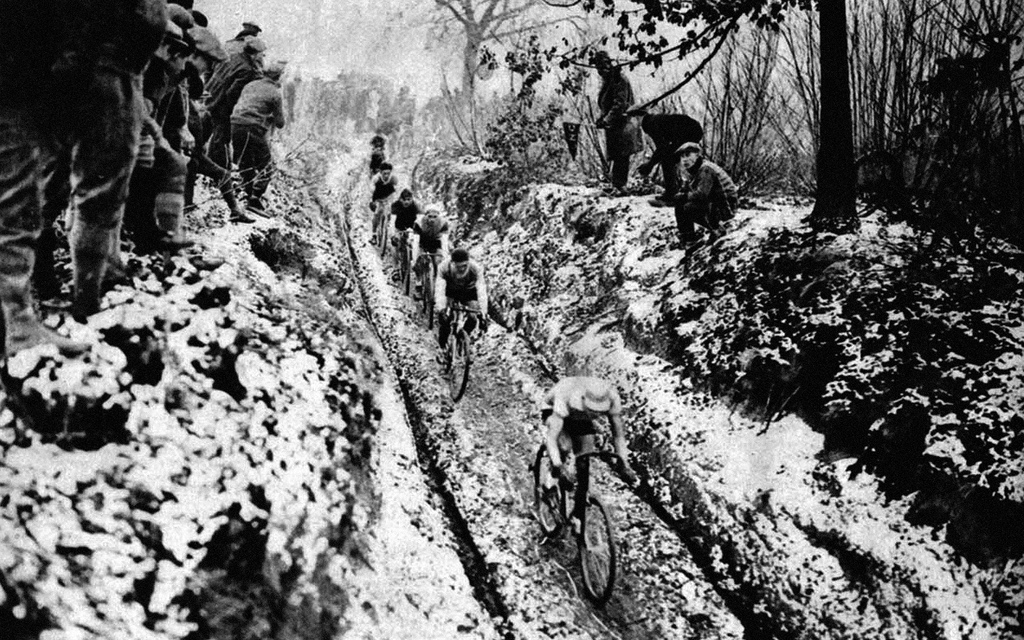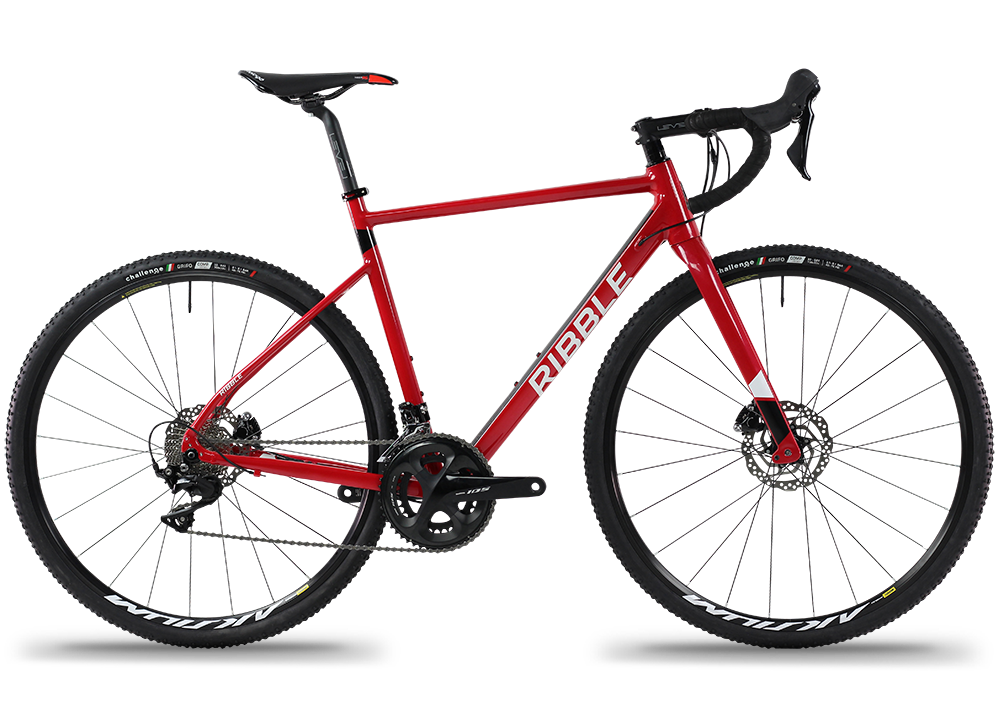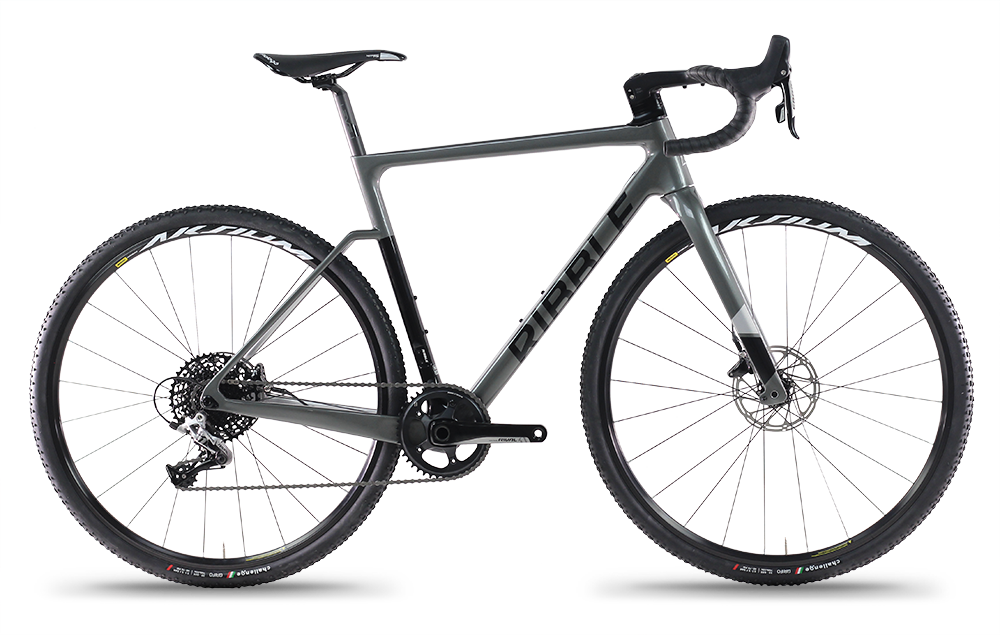Cyclocross the Lowdown - a Ribble guide
Have you ever considered taking up the sport of cyclocross? Cross is a fantastic way of keeping up your fitness levels during the cold/dark winter months. So, what exactly is cross and what does it entail? Check out Cyclocross - the lowdown, to find all you need to know about this exhilarating and fun form of off-road racing.
Cyclocross is a very specific form of high-intensity cycle racing that is traditionally held during the winter months. However, due to its growing popularity and the demand for race places, it is fast becoming a year-round sport. For the most part, the course is set on a short off-road circuit of approximately 2.5 to 3.5km (1.5 - 2 miles) distance. Due to the short nature of the cross course, the corners are incredibly tight. This requires riders to decelerate quickly, roll through, and then accelerate back up to speed as quickly as possible. They can also consist of terrain as varied as hardpack, mud, rocks, and even snow!
As well as the natural challenge of the route itself, there are also various obstacles for riders to contend with. Various natural and manmade obstacles set around the course test a riders' skills and fitness to the maximum. Steep grass banks and barriers will often require the rider to dismount and carry the bike over/around the obstacles. If a course doesn't offer sufficient natural obstacles, race organisers will throw in the odd log or sandpit. Making things a little more entertaining for riders and spectators alike.
Unlike most road races which are based on distance, cyclocross races are time-based. Dependent upon your race category, the race can be as quick as 30 minutes (for beginners), or as long as 60 minutes (for elites/pros). Another reason why cross racing is so popular is that it's equal for all. No matter whether you are a beginner or elite, you still compete around the same course and face the same trials. Above all else, cross racing is just incredibly good fun.
Vintage Cross

Early 20th-century cross racing was not for the faint-hearted.
Cyclocross racing as we know it today can trace its roots back to early 20th century France, 1902 to be precise. Its birth is attributed to a French soldier by the name of Daniel Gosseau who organised the first-ever national championship race. However, it seems that a forerunner to cross was already in existence. 'Steeple chasing' as it was referred to was a very simplistic concept. Firstly, a distant landmark on the skyline would be selected at random. A number of protagonists would then race each other to be the first to reach this point. The event was very much as the crow flies, even if this resulted in riders clambering over fences or wading through streams.
Modern Day Cyclocross
Modern-day Cyclocross is one of the fastest-growing cycling disciplines. This is in no small part due to them being completely traffic-free. Most road races (but especially time trials) are hosted on open roads which can be daunting, particularly for beginners.
Cross races are not simply aimed at serious pro racers who are out for victory at all costs. Riders of all ages, skill levels and experience use this form of racing as a valuable training tool to help maintain fitness levels throughout the winter months. When the road racing season rolls around again, the riders fitness levels are close to where they need to be to hit the ground running.
But it's not all serious racing. Cyclocross is also about challenging yourself in the most testing of conditions. It's about improving bike handling skills and sometimes falling off, whilst sharing a good laugh about it afterwards with like-minded people.
There's also a number of obstacles to overcome. It becomes something of a personal challenge to surmount each obstacle without having to dismount the bike. But in doing so, it will almost inevitably result in the occasional 'off'. Due to the nature of the course, it is almost certain to be a soft and perhaps mud-spattered landing!
https://www.youtube.com/watch?v=\_4CNFnJd6KY
A path to World Tour cycling
The sport of cross can also be an important leg up into the world of professional road cycling. It is now regarded as an important bridge into World Tour road racing teams. Some of cycling's current hottest properties on the road hale from cross backgrounds. Wout Van Aert, Mathieu Van Der Poel and Tom Pidcock have all forged successful road careers while competing in cross Many other stalwarts of the road cycling scene also began their journeys in cyclocross, and have gone on to great road racing careers. Rider of the likes of Zdenek Stybar and Tiesj Benoot to name just a couple. In the off-season, these riders are very likely to be found cross racing throughout Europe.
The Bike

Ribble Weldtite's Richard Jones navigates the obstacles carrying his CX SL at the No-Nonsense Cyclocross, Bradford.
Cyclocross bikes are manufactured from various materials, carbon fibre, alloy, titanium, and steel. Similarly, to a road racing machine, they also need to be lightweight. This enables them to be carried more easily up steep slopes and when clambering over obstacles. Like high-performance road racing bikes, they lend themselves to the more aggressive end of frame geometry. They have a relatively short wheelbase and low stack height which lends itself to razor-sharp steering and nimble handling.
Due to the design of cyclocross courses, riders will more often than not opt for a bike constructed from carbon or alloy. These materials are very stiff and lightweight whilst maintaining impressive strength to weight ratios. The underside of the top tube is flattened to enable the bike to be shouldered with more comfort when clearing an obstacle. The bottom bracket height is taller relative to a road bike. Providing extra clearance for the frame and pedals to clear rocks and other debris.

Engineered from lightweight yet durable aluminium, the alloy CX AL includes mudguard mounts for enhanced versatility. Making it an ideal option for the more imaginative everyday commute.
Click here to view the CX AL.
Typical design features
- Tyre clearance - In competition cycling's governing body (UCI) dictates that tyres must not exceed 33mm in UCI sanctioned events. However, the CX AL and CX SL both offer clerance for 38mm tyres, offering better traction and mud shedding capabilities.
- BB height - The bottom bracket is taller relative to a road bike to enhance clearance.
- Geometry - Steeper frame angles, a shorter wheelbase and low stack provide the agility requird for the tight, twisty, and technical cross circuits.
- Top Tube - A horizontal topt tube with a flattened underside creates more space for the bike to be carried on the shoulder. Also if the bike uses external cables they will be routed along the top of the tube. Our CX bikes are internally routed as standard.
- Disc brakes - To handle the mud and debris the absolute stopping power of disc brakes is a must. All modern cross bikes now have disc brakes fitted as standard.

The Ribble CX SL is a thoroughbred carbon cross machine for the serious CX racer.
Gearing

Shimano's much-anticipated gravel groupset GRX is also ideal for cross use.
As important to cyclocross as the frame is the gearing. Over the years trends have changed and gearing choices are quite different from yesteryear. Gearing selection is often dictated by a number of factors. Rider fitness, course terrain, and the rider's preferred style of riding all play a part. Do they like to grind a high gear or spin to win?
Double
A typical CX bike will come kitted out with a double chainring system at the front. In contrast to road groupsets, a CX setup will typically include 46/36 chainrings at the front and an 11/36 block at the rear. This combination provides tighter steps between gear shifts. Resulting in smoother pedalling cadence and more consistent power delivery.
Single Ring (1x)
Originally conceived for mountain bikes, the popularity of gravel bikes has now led to 1x systems making the transition to cross. This single ring system utilises a small chainring of 32-42T in combination with a very wide-ranged rear cassette. The cassette's largest sprocket will vary between 42 to 50T. This is largely to make up for the missing gear range of a second chainring at the front. The advantages of the 1x system off-road are numerous;
- No front derailleur - With only one chainring, there's no need for a front derailleur. This removes the possibility of debris becoming lodged at the front and causinge the chain to unship.
- Clutch system - 1x rear derailleurs feature a clutch system that was developed for MTB's. The clutch prevents the chain from bouncing unduly over rough terrain and reduces the chance for the chain to be 'dropped'.
- Simplicity - The lack of a front derailleur means that the left lever is simply a brake lever. There is no front gear cable and the gears are easier to adjust and require less maintenance.
- Weight - Fewer parts means a lighter bike.
Tyres/Brakes
The tyres and brakes can be as important, if not more so, than the material the frame is made from or the overall weight of the bike. If you’ve ever heard Formula 1 teams and commentators go on about tyres so much it’s because, like cyclocross, they are that important.
Tyres
Careful thought to tyre selection is necessary due to the variety of courses and their varying mixtures of surfaces. Pro racers will have several wheels available for use. Each of which will be set up with “Mud Tyres”, “Soft All Condition Tyres”, or “File-tread Tyres”. However, for the average rider fitting an all-rounder tyre is probably the best option! It's also important to bear in mind the air pressure for each tyre. Anything over 25 PSI should be avoided. Sure they'll be faster on the flat and in the dry, but they will suffer badly for traction in the mud.
Due to current UCI regulations, any CX bike taking part in UCI sanctioned events must be fitted with tyres no wider than 33mm. Race commissaires will commonly check tyre widths at the start of a CX race to ensure that no rider seeks an unfair advantage. The 33mm width allows for optimal tyre clearance, maintaining a quick ride and optimal grip.

Though fitted with 33mm tyres for competition there's ample clearance for tyres up to 38mm on the Ribble CX SL.
Brakes
Early examples of CX bikes were fitted with cantilever style brakes rather than the rim brake calliper that we are all familiar with. This was dictated by the cantilever brakes offering better mud clearance than rim brakes. However, the superior braking power and control offered by hydraulic disc brakes mean that they are now the brake of choice for all CX bikes. Their performance in wet and muddy conditions is unparalleled. Cantilevers are very much on the back burner when it comes to braking and as a whole, the industry is now geared up to hydraulic disc brakes.

Disc brakes deliver incredible stopping power and enable you to brake later with improved cornering speeds.
Interested in starting Cyclocross? It really is a fun way to keep up the fitness over the winter months, make new friends and above all have some fun! The Ribble CX AL or the brand new CX SL carbon gives you the perfect starting point for entry into the sport. With a fantastic variety of specifications, designed and hand-assembled by our professionals you can be out competing with the best within weeks!

Ribble Weldtite's Will Brown stretches his legs at the No-Nonsense Cyclocross, Bradford.
Steel is real, why is this material revered so much in cycling circles? Find out here.
Ribble CustomColour, what is it? How does it work? And what design do you need in your life? Find out here.

Electric Road Bike vs Road Bike - What's the difference?
Electric road bike vs road bike: what’s the real difference? We cut through the myths and show how e-road bikes stack up against traditional road bikes, rider to rider.

How Far Can an Electric Bike Go? Range, Batteries & Real-World Tips
“How far can an electric bike really go?” In this guide, we’ll break down exactly what determines e-bike range, share practical tips to make every charge go further, and show how Ribble’s electric bikes compare in real-world conditions.

Are e-bikes Just for Old People? Myths Debunked
Think e-bikes are just for old folks, or perhaps you feel e-bikes are cheating? Think again. We’re busting the biggest myths holding riders back from discovering what e-bikes really offer.

Smiles Per Kilo: The Real Benefit of Riding a Lightweight E-bike
What if the real breakthrough in e-bikes wasn’t more watts or bigger batteries, but a ride so light and natural you forget it’s electric until you want the extra push?

Best Electric Bikes for Winter – Top Picks for Road, Gravel & Hybrid Riders
Ride further this winter with the best E-Bikes for road, gravel and hybrid – light, versatile and ready for all conditions.

ULTRA-RACE vs ULTRA-AERO: Which Ribble Race Bike Fits Your Ride?
Two world-class race bikes, two very different strengths - discover whether the ULTRA-RACE or ULTRA-AERO is the ultimate machine for your style of riding.

Do You Really Need a Winter Bike? Benefits, Setup & Key Features
Discover why a dedicated winter bike could be the smartest upgrade you make this year - protecting your best bike, cutting maintenance costs, and keeping you riding strong whatever the weather.

From Gravel to GRIT: Your Guide to Ribble’s New Gravel Ranges
The Ribble Gravel range has evolved into the new ALLGRIT and ULTRA-GRIT families, making it easier than ever to choose the perfect bike for your ride - from adventure-ready versatility to race-day speed, with SPORTFIT flat bar options for added comfort and control.

ALLGRIT vs ULTRA-GRIT: Which Gravel Bike Is Right For You?
Gravel riding means different things to different riders - from all-day adventure to flat-out speed. That’s why we built two platforms: ALLGRIT for versatility and ULTRA-GRIT for racing. Here’s how to choose the right one for you.

CGR vs ALLROAD: Choosing Between Versatility & Endurance Performance
Not sure whether the CGR or the ALLROAD is the right bike for you? Both deliver big-mile comfort and performance - but in very different ways. Here’s how to cut through the detail and find your perfect match.

CGR vs Gravel: Choosing Between Multi-Surface & Gravel Performance
Whether it’s the daily commute, weekend roads, or gravel epics, we have two platforms built to go beyond the beaten path: the CGR and our Gravel range. The question is - which one’s right for you?

What Is SPORTFIT? And Who Is It Made For?
Not every rider wants to be locked into the aggressive position of drop bars. Some prefer the confidence and control of a flat-bar setup, without sacrificing the performance and versatility of a high-quality frame. That’s exactly why we created SPORTFIT.